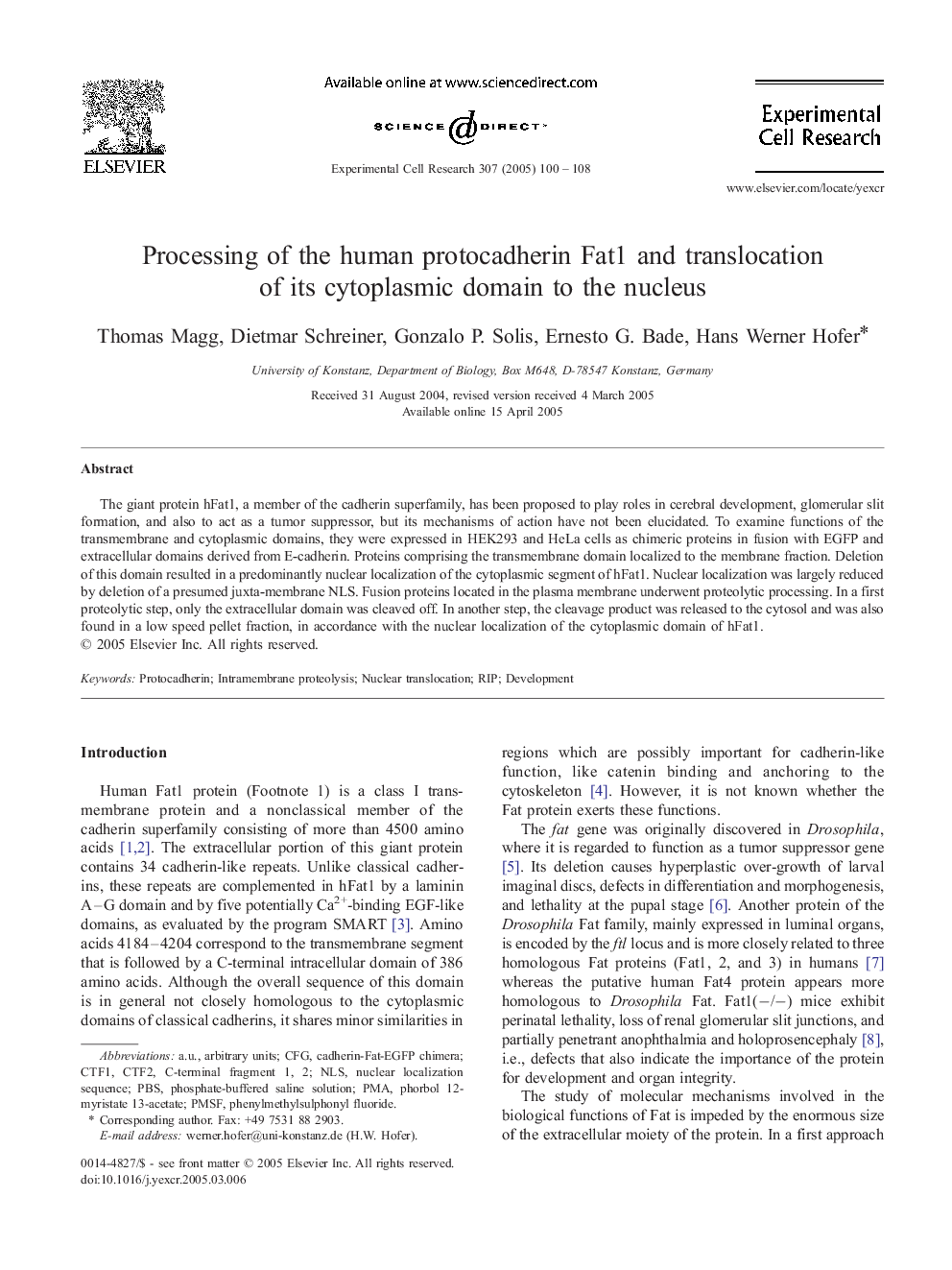| Article ID | Journal | Published Year | Pages | File Type |
|---|---|---|---|---|
| 10905194 | Experimental Cell Research | 2005 | 9 Pages |
Abstract
The giant protein hFat1, a member of the cadherin superfamily, has been proposed to play roles in cerebral development, glomerular slit formation, and also to act as a tumor suppressor, but its mechanisms of action have not been elucidated. To examine functions of the transmembrane and cytoplasmic domains, they were expressed in HEK293 and HeLa cells as chimeric proteins in fusion with EGFP and extracellular domains derived from E-cadherin. Proteins comprising the transmembrane domain localized to the membrane fraction. Deletion of this domain resulted in a predominantly nuclear localization of the cytoplasmic segment of hFat1. Nuclear localization was largely reduced by deletion of a presumed juxta-membrane NLS. Fusion proteins located in the plasma membrane underwent proteolytic processing. In a first proteolytic step, only the extracellular domain was cleaved off. In another step, the cleavage product was released to the cytosol and was also found in a low speed pellet fraction, in accordance with the nuclear localization of the cytoplasmic domain of hFat1.
Keywords
Related Topics
Life Sciences
Biochemistry, Genetics and Molecular Biology
Cancer Research
Authors
Thomas Magg, Dietmar Schreiner, Gonzalo P. Solis, Ernesto G. Bade, Hans Werner Hofer,
